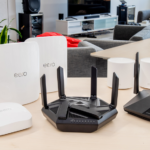Smart home technology in 2025 is smarter, more intuitive, and more accessible than ever. From voice-controlled hubs to AI-powered lawn mowers, these devices bring convenience, security, and efficiency to your fingertips. Whether you’re a tech newbie or a seasoned smart home enthusiast, our expertly curated list of the best smart home devices for 2025 will help you transform your living space. We’ve tested and researched the latest gadgets, focusing on functionality, compatibility, and value, to bring you top picks across 19 categories. Let’s explore the devices that will define smart living this year.
Why You Need Smart Home Devices
Smart home devices connect to your Wi-Fi, allowing remote control via apps or voice assistants like Alexa, Google Assistant, or Siri. In 2025, they’re more affordable, interoperable (thanks to standards like Matter), and packed with AI-driven features. They save time, reduce energy costs, enhance security, and add a touch of fun to daily life. With seamless integration across ecosystems, building a smart home has never been easier—or more essential. Learn more about the evolution of smart homes from TechRadar’s 2025 guide.
Smart Speakers: Your Voice-Controlled Hub
Amazon Echo (5th Gen)

Price: Amazon Price
The Echo (5th Gen) is a compact, powerful speaker with Alexa at its core. Check out Tom’s Guide’s review.
- Key Features: 3-inch woofer, dual 0.8-inch tweeters, built-in Zigbee and Matter hub, Wi-Fi 6, temperature sensor, adaptive sound.
- Pros: Rich audio, versatile hub functionality, fast Wi-Fi, privacy mic switch, affordable price.
- Cons: Alexa struggles with complex queries, limited color options, no built-in camera, average bass depth, setup can be finicky.
This Echo delivers room-filling sound and doubles as a smart home hub, controlling lights, locks, and more without extra hardware. Its 2025 update adds Matter support, ensuring compatibility with a growing range of devices.
Google Nest Audio 2nd Gen

Price: Amazon Price
Google’s Nest Audio 2 is a stylish speaker for Assistant loyalists. See CNET’s take on its predecessor.
- Key Features: 75mm woofer, 19mm tweeter, multi-room audio, recycled fabric build, voice match, ambient EQ.
- Pros: Clear sound, eco-friendly design, intuitive Assistant, multi-room sync, sleek look.
- Cons: No hub functionality, slightly pricey, no Bluetooth, limited bass, smaller feature set than Echo.
Ideal for Google ecosystem users, it excels at natural voice interactions and integrates seamlessly with Google services.
Smart Displays: See and Control Everything
Amazon Echo Show 15

Price: Amazon Price
A wall-mountable 15.6-inch hub for family and home control.
- Key Features: 1080p display, 5MP camera, dual 1.6-inch speakers, customizable widgets, Alexa voice control, facial recognition.
- Pros: Large vibrant screen, flexible mounting, family organization tools, video call clarity, broad compatibility.
- Cons: Weak audio, high price, no tilt adjustment, heavy for some walls, camera privacy concerns.
Perfect for kitchens or living rooms, it displays schedules, camera feeds, and more, though its speakers underwhelm.
Google Nest Hub

Price: Amazon price
A compact display with sleep tracking and gesture control. Explore TechRadar’s insights.
- Key Features: 10-inch 1280×800 display, Soli radar, 50mm driver, sleep sensing, no camera, Google Photos integration.
- Pros: Accurate sleep tracking, privacy-focused design, intuitive gestures, photo frame mode, affordable.
- Cons: No video calls, smaller screen, basic audio, limited app support, sleep data requires subscription.
Great for bedside use, it prioritizes privacy and wellness over multimedia.
Smart Hubs: Unify Your Ecosystem
Samsung SmartThings Hub 2.0

Price: Amazon price
A powerful hub for seamless device integration. Learn more at ZDNET’s hub guide.
- Key Features: Matter and Thread support, Zigbee 3.0, Wi-Fi 6, app control, voice assistant compatibility (Alexa, Google, Bixby).
- Pros: Broad compatibility, fast connectivity, easy setup, robust app, future-proof with Matter.
- Cons: No built-in speaker, pricey for a hub, occasional lag, complex for beginners, limited onboard storage.
This hub ties together diverse devices, making it a must for mixed ecosystems.
Smart Thermostats: Smarter Climate Control
Nest Learning Thermostat

Price: Amazon price
An AI-driven thermostat for energy savings. See Consumer Reports’ evaluation.
- Key Features: 2.4-inch QVGA display, adaptive learning, Wi-Fi, renewable energy integration, multi-system support, Farsight display.
- Pros: Learns routines, stylish design, energy insights, wide compatibility, remote control.
- Cons: High cost, tricky install, no built-in Alexa, subscription for extras, occasional over-adjustment.
It optimizes your HVAC system effortlessly, with a sleek look to match.
Ecobee SmartThermostat Enhanced

Price: Amazon price
A feature-rich thermostat with air quality focus. Check PCMag’s review.
- Key Features: 3.5-inch touchscreen, built-in Alexa, radar sensor, air quality monitor, Wi-Fi 6, room sensor included.
- Pros: Alexa integration, health insights, even temp control, intuitive app, modern design.
- Cons: Bulky, Alexa can intrude, complex setup, pricey sensor add-ons, no HomeKit support.
Ideal for health-conscious homes, it balances comfort and air quality.
Latest Top FAQs About Smart Home Devices in 2025
Here are answers to the most pressing questions about smart home devices in 2025, based on current trends and user concerns as of March 26, 2025.
1. What is Matter, and why does it matter for my smart home?
Matter is a universal smart home standard launched by the Connectivity Standards Alliance, backed by Amazon, Google, Apple, and others. It ensures devices from different brands work together seamlessly, reducing compatibility headaches. In 2025, devices like the Amazon Echo (5th Gen) and Philips Hue Kit support Matter, making them future-proof. Learn more from CNET’s Matter guide.
2. Are smart home devices secure from hacking in 2025?
Security has improved with encrypted protocols and AI-driven threat detection, but risks remain. Devices like the Yale Assure Lock 2 use biometric and Wi-Fi encryption for robust protection. Still, experts recommend strong passwords, two-factor authentication, and regular firmware updates. TechRadar’s security tips offer practical advice.
3. How much can I save on energy bills with smart devices?
Smart thermostats like the Nest Learning Thermostat (4th Gen) can save 10-15% on heating and cooling costs annually, per Energy Star. Smart plugs and lights, such as the TP-Link Kasa Smart Plug Ultra, add further savings by cutting standby power. Expect $100-$200 yearly savings, depending on usage.
4. Do I need a hub for my smart home in 2025?
Not always. While hubs like the Samsung SmartThings Hub 2.0 unify diverse devices, many 2025 gadgets—like the LIFX Mini Color—use Wi-Fi or Matter for direct control. Hubs are best for complex setups or older Zigbee/Z-Wave devices. PCMag’s hub explainer breaks it down.
5. Can smart devices work without internet in 2025?
Some can, but most rely on internet for full functionality. Devices like the August Wi-Fi Smart Lock (5th Gen) use Bluetooth for local control if Wi-Fi drops, while others, like the Ring Video Doorbell 4K, need cloud access for alerts. Check specs for offline modes. ZDNET’s offline guide has more details.
How to Choose the Right Devices
Pick devices based on your needs—security, convenience, or wellness. Ensure compatibility with your ecosystem (Alexa, Google, HomeKit) and prioritize Matter support for future-proofing. Start with a hub or speaker, then expand. With these 2025 picks, your smart home will be cutting-edge and tailored to you.






